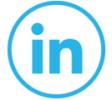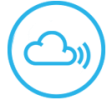This was an LDN Radio Show interview in 2022.
Linda Elsegood: Welcome to the LDN Radio Show, brought to you by the LDN Research Trust I'm your host, Linda Elsegood. I have an exciting lineup of guest speakers who are LDN experts in their field. We will be discussing low-dose naltrexone and its many uses in autoimmune diseases, cancers, etc. Thank you for joining us.
Today we're joined by Dr Nasha Winters, who's also one of the LDN Research Trust Medical Advisors. Thank you for joining us today, Nasha.
Dr. Winters: Linda, it's so good to see you, and so good to be here with everybody else. I always enjoy these conversations.
Linda Elsegood: So, you're going to tell us about LDN and the future of healthcare.
Dr. Winters: Yeah, you know, it's funny, because you and I, we've talked about a lot of different topics over our years together, though I’m going to spend the majority of our time today talking about where health care needs to go, and where LDN falls into that. I was actually looking back at my notes, I think this was back in 2016 or 2017 when I was at an LDN conference with you, where we were talking about why is this not part of just standard of care, this low-cost, highly-effective, very low if any adverse events, very multi-targeted in a lot of different disease conditions? It just still is a crazy thing for me to believe that this is still not included in standard of care, and that there are still so many naysayers out there in the medical environment. That is keeping people from having easy access to this very very supportive therapeutic intervention. So that being said, I think that is also just sort of an example of just how inherently flawed our medical systems are. And I think, depending on which side of the pond you live, that some people here in the United States think, “Oh wouldn't it be great to have a national healthcare system?” And then folks over in the UK look at us and say, “Wouldn't it be great to have access to more integrative functional medicine pieces?” And really, all of the systems globally are inherently flawed at this time, in the world around us.
And so, I just wanted to give maybe a little lay in the land to help people understand a few key things that have just happened in the last 50 years, to sort of highlight and stamp where we got off the tracks, and what it's going to take to bring us onto an entirely new path. This idea of health care, which I think is such a misnomer - it really is disease care, disease management - nothing about it is healthy or health-inducing or health-inspiring or health-creating. But we made a big shift after World War II. The whole planet had a collective experience with World War II, and as such, a lot of our resources got shifted of what we had access to and what we needed to sort of patch ourselves together. So you can appreciate why it came to be, but you can't appreciate that we're still staying in that mindset 50 years later. We moved into much more grain production post-World War II, just in order to keep up with the demand for more bread, which was deeply rationed during the world wars. Feed for animals, thanks to an increase in our concentrated animal feeding facilities, known as CAFOs here in the United States, to help feed the livestock like beef and pork. Specifically, we had the war on cancer which was waged in the United States in 1971, an act signed into life by President Nixon. It really was the first time we claimed the war on cancer, and 50 years later we're no further down the road with that. We started bringing glyphosate more out of a lab and into our world around us. Cigarette ads were only banned from TV 50 years. We finally banned them from TV, and yet they're still highly available to everybody, and a couple little warning labels on the packages has not changed our smoking rates much throughout the world. Berkeley Chemists in Berkeley California announced the first growth hormones that were later added to our food supply in 1971. We started using our first CT scans in London in 1971. We gave a Nobel prize to Earl Wilbur Sutherland Jr for discovering the mechanism of action of hormones, namely epinephrine, which started to really elucidate our stress response patterns. Yet we've not really incorporated that into medical practice. We started monocropping the world and therefore monocropping our microbiotic internal soil as well, which left us really with poor resilience to how we deal with disease management and disease prevention. And in the last five or six years we've even awarded Nobel prizes, very very high level Nobel prizes, to things like circadian rhythm biology, fasting and autophagy, and the microbiota and areas around the immune system, and yet ironically none of these amazing Nobel prize awarded individuals have their work adopted in the general standards of care.
So I give you that example that yeah, we're talking about it, but we're not doing anything about it, and it feels like I’m having the same conversation around things like low-dose naltrexone. So that's a piece I wanted just to kind of lay that framework to go wow, the problem. Right. What's the problem? So a little bit more before we talk about the solution. Take a breath Linda, and see if there's anything you want to add or further clarify from that whole soliloquy.
Linda Elsegood: I just found that really interesting about the facts that I didn't know.
Dr. Winters: Well, good, because I’m a little bit of a history buff, and so I really like to understand where we've come from so we can understand why we got to this place. But it also helps us create a new path forward. It's like we don't want to repeat history over and over again, so let's come up with something new. But just as I said in the beginning of our conversation, there's really nothing healthy about our current healthcare system, no matter where you live on the planet. It's a model based on disease management with no interest in prevention of the disease or creation of health and wellness. In fact, in the United States there's an organization called the CDC. Everyone's heard of it, the Center for Disease Control. And a few years ago, there was a secondary part of that title. It was the Center for Disease Control and Prevention. That last bit has conveniently fallen off their website, and you don't see that anymore, which is also very interesting and telling. And because I only know the stats from the United States off the top of my head, we're not too far behind any industrialized westernized country, or kind of neck and neck with regards to these numbers, so if you live in the UK or other parts of the EU, these probably apply to you as well. The United States is ranked 27th worldwide in terms of healthcare, and yet we have the most expensive healthcare system in the world, and we're also the country losing longevity while other countries are staying the same or improving their longevity. And a lot of our scientists and researchers out there are calling that loss of longevity “an era of despair”. The longevity is coming down because of people taking their own lives, so suicide, and opiate overdose, which starts to show you kind of this trend of just sort of a dissatisfaction of life, hiding or medicating the pain. And yet we don't have anything in our medical systems to really address those head-on.
The United States spends over 20 percent of its gross domestic product on healthcare, whereas back in 1971, seven percent. That is a giant jump. The average cost of a meal in a hospital, which is where we're trying to nourish the most vulnerable people, is a $1.37. Right now, the euro and the dollar are almost next to next, so it's about $1.50 maybe for the euro, but $1.37 is what we're trying to nourish people with. Back to health. And so the cardboard and distilled water that you could take would probably be healthier than what's being offered in most hospital systems, which is really unfortunate. These are just some things to keep in mind.
The other thing is cheap food leads to poor health, and there are food deserts all over the world that exist, that are keeping people in really underserved and disenfranchised communities even more oppressed in so many ways. And we have a terrible deficit of our nutrition education, and wellness education, in our medical schools, where less than 25 percent of normal medical schools are even offered an elective course in nutrition. We're out there trying to tell people how to nourish themselves, and yet we've had no training in the medical field to do as such.
So, a wellness ecosystem, that's what we have to start to think about. That's where we start to move into a solution. It goes above and beyond food, it goes above and beyond access to inexpensive highly effective therapies such as low dose naltrexone. And it needs to break away from this disease management model and move us away from sort of the three big drivers of this model, which are big pharma, big agriculture, and insurance. And that means even the insurance model we have here in the United States, or even the national health care systems in other parts of the world, the only way we're going to break these habits and change this trajectory, is by leaving those systems in the dust by completely getting out of them. There's a quote, I don't know if you, Linda, or any of your listeners know the British Indian philosopher and activist Satish Kumar. He's a really interesting voice, sort of like a hopeful future, with regards to health and well-being. And so I love this quote:
"Holistic thinking brings soil, soul ,and society together as three aspects of one big picture. This is the new trinity of our time. When we become single issue oriented, we believe that if only the world could achieve environmental sustainability, or if only everyone could practice spirituality, or if only we could establish social justice in the world, then everything would be sorted. But this kind of single issue obsession doesn't take us very far, because it's too narrow. All of these issues. all of these disparities. are interrelated.”
I really love that piece because it's going to take us moving out of the current trinity as a collective, to make a hopeful future for all of us. We need to reclaim our health. We need to reclaim our ecosystem. And we need to set a new structure.
One of the things I love to think about here is, wouldn't it be amazing, Linda, if we could all have basically insurance coverage or health care coverage; a community supported agriculture - we call them CAFOs here in the United States - wouldn't it be amazing if you basically were given a stipend for your food that comes from a local regional organic farmer and rancher orchardists, to nourish yourself and to nourish your family, instead of having to depend on some of those deserts - food desert environments or fast food environments, or highly processed chemicalized food options, to feed the less financially stable of our communities. Wouldn't it just be amazing if that was just a standard of care, to have access to good quality food, which doesn't take that much to create. It just takes leaving the current system and the dependence on that current system.
For me, these ideas started to spread about 29 years ago, after my own terminal diagnosis, growing up impoverished, growing up in extreme trauma, growing up in an environment where I would have been considered one of those people that could never leave the system in which I was created, never leaving this sort of cycle of abuse and poverty and trauma and lack of education. Yet I managed to pull up my own bootstraps and do something different for myself. But not everybody can do that, or has the resources or the wherewithal to do that. This vision started percolating for me all those years ago because I was sick, because I was uninsured, because I was literally on my own, and on every level you could imagine, I started dreaming about, envisioning sketching about, making lists, exploring the world for almost the past three decades, to build a non-profit residential hospital and research institute For me, obviously the special focus is on oncology care, but also in prevention and wellness. So this Metabolic Terrain Institute of Health, that's the first of its kind, will be the template. The sort of pilot is being built in southeast Arizona in the United States, against all of the goliaths of big pharma, big ag, of insurance, because we're leaving all of those models behind, and we're literally changing the standard to cancer care and prevention, from the soil to the soul, and recasting cancer from a death sentence as it's seen today, into more of a manageable disease process. And you could put other diseases in the place of cancer. That could be diabetes, that could be Alzheimer's, that could be cardiovascular disease, whatever chronic disease du jour you want to put in that, that's what this campus is hoping to support. And so that trinity that Kumar talked about here is about bringing a convergence of talented like-minded individuals to the table, and systemizing a methodology that enhances patient outcomes, and prevents physician burnout. And scaling it by training physicians and patient advocates globally to get into a new narrative around health creation versus disease management. We've been spending the last couple of years making this come to fruition. Our physician reaches now over 88 positions globally, over 200 patient advocates globally, growing twice a year. We do courses ongoing, so that we can start to educate a new way of thinking around the world. Our goal before the doors of the hospital open is to have 500 physicians and a thousand patient advocates, and we're well on our way to meeting that piece here, because we know it's just the start we need right now. For instance, there are only 12 million oncologists in the world, and we have too many patients needing them. There's not enough. We have to get folks trained, and more and more doctors are leaving general family practice now, and going into specialties, which is kind of leaving the general public in trouble. We're trying to change that need, and then we're also simultaneously building and launching a data platform that collects our information to show that this new methodology, this new systems thinking, this new collective networking global environment, is in fact lowering healthcare costs and improving patient outcomes. To show that, because we hear well, there's no research in this well, there's no research because there's not a model to research. All right, we all have our n of ones and our little integrated practices, but when you put a bunch of us together and that data comes into a really robust platform, we can show in real time the dents we're making.
That vision of this hospital where folks can come and immerse themselves, and show themselves again how to live healthy on an unhealthy planet, cost share their supplements, cost share their imaging, costs share their off-label drugs costs, share their pharmaceuticals, their other interventions, that they need for their health to thrive. That makes a huge difference. I don't know what it what it is for you guys in the UK, but in the United States the average American spends $20,000 each year on healthcare. That's just their insurance premiums, their deductibles and the out of pockets that aren't covered by insurance. That's the average, which means there's a lot more people paying a lot more than that. And if you want a truly integrative innovative approach, you're going to be paying a heck of a lot more than that. So, we were imagining, can you imagine taking that 20 grand and putting it into something that's actually health creating versus disease mitigating? What a difference that could make in a very short period of time. And then also, this move that many people are hearing about, to sort of a decentralized financial structure where you're looking more at sort of tokens, and sort of the cyber or the crypto currencies and whatnot. There are massive moves happening right now that within five years, this decentralized financial model that shows extreme transparency, so you really do know the true cost of your health care. And where those funds are really going will reflect that probably 90% of all the money spent on health care today is actually a huge failure, and not doing anything to change people's healthcare status. The overhead to maintain the monster model that we have that is clearly ineffective, is needing to be deconstructed and put into a whole other financial structure. So that's happening.
Then, those folks saying that there's no research in this, well no one wants to fund trials like this, and this type of health care does not put everybody in the same room and give them all the same treatment and expect a miracle for each individual, just like Linda. You and I have seen patient after patient after patient for just LDN alone. Look at the variability of who needs to have their dose in the morning, who needs to start at a micro dose versus the 1.5 milligram, who does better, who only needs 1.5 milligrams to derive all the benefit, who has results within a few days, who takes a few months to get the results. That alone for that single agent shows the incredible diversity of our health population, that is not given any credence in our standard of care models of health today.
So this is what's so fun to me, of like re-envisioning what we're building outside of this, and what needs to happen to make this vision come alive. A lot of that as well means we have to build it from scratch. We have to build it from scratch so this non-profit, we're taking philanthropic monies, we're taking grants, we're taking research dollars to build this model. Because of the cost share, we're even able to keep those that have the means into a lower cost cash pay model. We won't be accepting insurance of any kind from anywhere. If people want to submit it to their insurance, if they still have standard of care, they're welcome to do that. But we're very confident that what we could offer would be far less expensive and far more valuable and far more impactful than anything they're currently experiencing. You probably hear this all the time, and experience it. Especially my folks, who are in national healthcare systems, when patients say to me, “Well, I can't afford that, that's out of pocket” and I’m thinking “Well what are you spending your money on, like where are your priorities.” Health is our wealth. Without health we have nothing, and for people like you and I, who've experienced the side of the pendulum where health was elusive to us, we really value the importance of turning over every stone and recognizing that to actually survive, we're going to have to leave the system and do a little bit more on our own. You and I are the weird unicorns, in that most people don't even know that's available to them, or are truly poorly resourced in a way that they can't get access to that. We know that this future healthcare model needs to create a new standard of care.
I know I covered a lot here, but I just want to start to paint a picture of what is being built. I’ve been told for 29 years this could never happen, and what I’ve seen happen in the last 10 years, and in particular in the last two, it's happening. And now that more and more people are coming together collectively into our network, and other little islands and pods and silos of this happening all over the planet, we're all finding coherence and resonance with knowing that we can't fix it, as I tried doing in the first 20 years of my practice. I can't fix the broken system. It exhausted me, it burned me, out it broke my heart, it made me physically ill, going in time and time and time again trying to fix a broken system. So I realized about a decade ago, I have to completely get out of it and build a new one. Luckily I keep finding sort of tribal members all over the planet, that are interested and curious enough and willing enough to do the work to do the same.
I was excited that we got to have this conversation today, because I feel like what you offer. and what the Trust offers, are opportunities, resources, awarenesses, that there are so much more than we're just being spoon-fed. These are the conversations that I hope are just the beginning for you and your listeners, to help us create collectively a new and hopeful healthcare future.
Linda Elsegood: If there are any medical professionals or patients out there who really want to back and support you, what can they do? How can they start the journey with you?
Dr. Winters: Well, definitely start by going over to https://mtih.org which is our non-profit hospital and education platform. That stands for Metabolic Terrain Institute of Health, mtih.org. You can get a ton of information there. There's even a little ‘how can I help’ button that shows like, you can help in donations, you can help in volunteering your expertise. We have a CEO who was the head of a billion dollar revenue non-profit hospital who's come to the table because he did that work for 26 years, and saw what a dead end it was. So he's jumping on board to help us with his expertise of how to build the new hospital system. For things like the regenerative agriculture environment, we have farmers and ranchers coming too, because our hospital is on a massive campus where 75 percent of the campus is a food forest. So we're able to nourish people. Our patients that come to this environment will be in the fields with the farmers, as well as in the kitchen with the chefs. But they're also going to be in the fields, in the kitchens, with the doctors and the nurses and the adjunct. The healing community folks are realizing what it takes to create health and prevent disease, and so those types of options are coming up. Then, if you are a physician who wants to learn more about this truly innovative methodology and systemic thinking model, of how you want to apply it your own patient practice, whether you work with cancer patients or not, it applies across the board. We offer courses twice a year. Our next one is September 2022 - we offer it in September and February of every year, and then we have the same thing for our patient advocates. If you don't have a medical degree but you also want to be part of this movement, we offer a patient advocacy training as well, which we're also bringing in ways to help you monetize it and create a self-care program for yourself, but also create a career path, because we need a lot of bodies, a lot of like-minded souls to make this mission come alive.
That's really amazing, absolutely fantastic, and so needed literally across the globe. I used to think it was just a problem in my own town in Colorado, and then I realized oh no, in the US; oh, and then I realized oh Canada, and then oh the UK. It's like it expands beyond that of all my world travels and all the conferences, and all the patients I consult with globally, and their health care providers globally, this is a global issue and it's going to take a global shift, and we need to do it together.
Linda Elsegood: We wish you every success, thank you
Dr. Winters: Thank you Linda, thank you for the opportunity to talk about my passion and purpose.
Any questions or comments you may have please email me at Contact@ldnresearchtrust.org I look forward to hearing from you. Thank you for joining us today. We really appreciated your company. Until next time, stay safe and keep well.







